#Crested serpent eagle
Explore tagged Tumblr posts
Photo

Crested Serpent Eagle (Spilornis cheela)
© David Kirsch
184 notes
·
View notes
Text

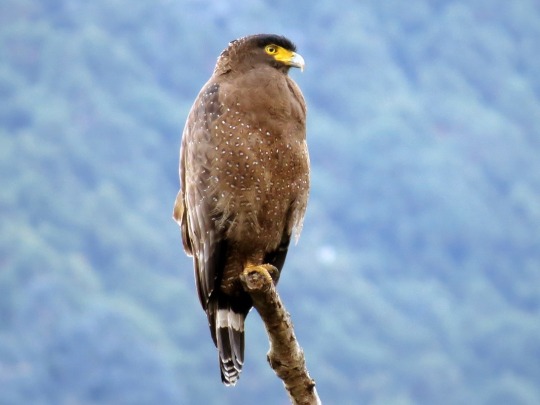
Crested Serpent Eagle
448 notes
·
View notes
Text

[2778/11080] Crested serpent eagle - Spilornis cheela
Order: Accipitriformes Family: Accipitridae
Photo credit: David Kirsch via Macaulay Library
#birds#Crested serpent eagle#Accipitriformes#Accipitridae#Spilornis#birds a to z#undescribed#25% - 50%
123 notes
·
View notes
Text
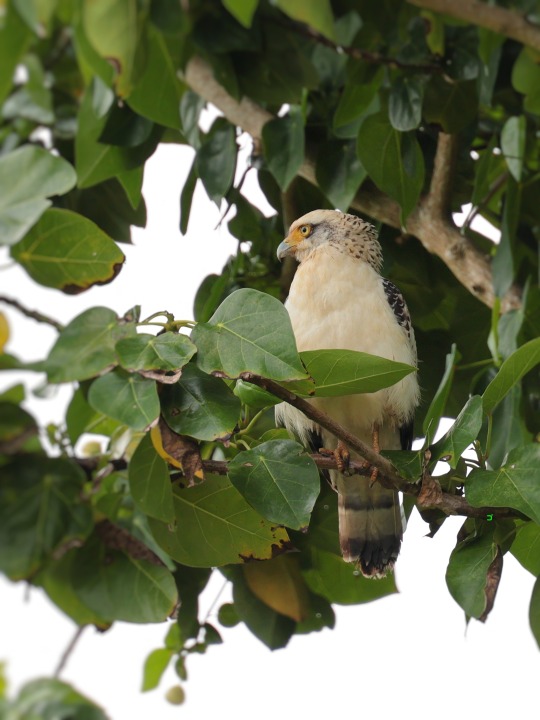
カンムリワシ(幼鳥)
アヤパニさん。
R6.2
#西表島#カンムリワシ#アヤパニ#生き物#自然#nature#photography#写真#animal#bird watching#bird photography#birdwatching#野鳥#鳥#特別天然記念物#crested serpent eagle#eagles
39 notes
·
View notes
Text

Crested serpent eagle, Nagarahole national park, March, 2023
#eagle#serpent eagle#crested serpent eagle#big birds#perches#trees#nagarahole#national park#wildlife#Karnataka#forest#jungle#birds#camouflage#crest#colors#red#beak#hooked beak#yellow eyes#eyes
5 notes
·
View notes
Text

Crested Serpent Eagle (Spilornis cheela), with tasty snake, family Accipitridae, order Accipitriformes, Kerala, India
photograph by Baji Kuruvilla
#serpent eagle#eagle#raptor#bird#ornithology#spilornis#accipitridae#accipitriformes#india#animals#nature
436 notes
·
View notes
Text
THE SIGN – CULTURAL REFERENCES, MYTHOLOGY AND META

This post comes on the heels of the one by @respectthepetty about mythology and meta of The Sign, linked here. 😍👍 If you've not read it yet, I recommend you do before watching any more of this series, because it will help things make more sense (especially if you're not familiar with some of the cultural references thrumming in the background).
Anyway, I'd previously done some research on the legend(s) of the Garuda and the Naga in Southeast Asia, and so I'm writing this post to share what I've found because it does have relevance to at least some of what we're seeing onscreen in The Sign, and elaborates on @respectthepetty's post.
The Garuda and the Naga are mythical beings with origins in Indian mythology that have been transposed into cultures across Southeast Asia.

In Hinduism, Garuda is a single deity, depicted in either full-bird form or part-bird and part-human, and is the king of birds and also a divine sun-bird (with physical attributes similar to an eagle's). His elder brother, Aruna, is the chariot driver for Surya the sun-god, while Garuda himself is the mount of Vishnu.
In Buddhist mythology, the garudas (sometimes also spelt garulas) are a society and race of gigantic predatory birds, sometimes also depicted as part-human in form. The garudas are intelligent, social and blessed with might and magical powers.
Thailand may be predominantly Buddhist, but it has also been strongly influenced by ancient Indian culture and Hinduism, and thus both the concept of a single deity Garuda and the race of garudas co-exist in Thai mythological beliefs.
The nagas on the other hand, are snake-like or dragon-like creatures, whose realm is the water world. (The word naga is derived from Sanskrit and is also etymologically related to the English word snake.)
In mythology nagas and garudas are perpetual enemies, although neither side is actually identified with good or evil – they are simply two groups eternally at war with each other (so occidental-leaning minds should dispel any preconception that the water serpents are necessarily the bad guys in The Sign, even though the narrative seems to be tilting in that direction).
When borrowed into popular culture (as has been done for The Sign) you may sometimes see influences of Chinese dragon and phoenix mythology (as Chinese cultural influence is also present in Thailand, and the dragon/phoenix motif of Sinitic culture nicely parallels the naga/garuda conflict pairing). And because of Garuda's association with the sun in Hinduism, and a parallel with the fiery phoenix of Western mythology, you may sometimes see garudas portrayed as aligned with the sun and/or flame as well.
There are some hints of these in The Sign. The naga that Phaya encounters while struggling underwater during the open sea training challenge in Ep.1 is very Thai in appearance (especially with the curved, forward-pointing crest, making it look much like the nagas that adorn Thai temple architecture). But the array of pronged, backward-pointing horns and trailing antennae appear to be a design nod at Chinese or Japanese dragons (East Asian dragons are also strongly identified with the watery realm, by the way). And in the graphics of the series (e.g., in the poster at the start of this post), the sky (the realm of Garuda) is suffused with sunlight and speckled with what look like drifting sparks, referencing sun and flame.
Because of the wings tattooed on his back and his time in the air force, Phaya is most likely the reincarnation of a garuda in human form (and this is why he struggled with the water challenge, as he was completely out of his element).

This is also possibly why we see him smoking early on in the series (because of the alignment of Garuda with the element of fire), and significantly he does this while Naga Tharn (irked by Yai's teasing at the dining table) seeks refuge in the washroom (which is ห้องน้ำ/hong naam in Thai, literally water room):

Billy also describes Phaya's character in the promo video for the series (linked here) as being "like fire, always hot and burning... quite hot-headed." 👍
Elsewhere in the same promo video (linked here), Tharn's good friend Chalothon is explicitly identified as the reincarnation of an important naga, which immediately signals that he and Phaya will be at odds in the series:

The water deity that saves Phaya during the open sea challenge – Wansarat, whom he drew in his sketchbook – is not just Freen Sarocha in a fancy scuba suit. 😂

If you look at her arm and hand when she reaches out to save Phaya (before she turns into Tharn) the green scales meld into the skin of her human wrist – they're part of her natural covering, and she's really a nakhee/nagin/nagini, a female naga, appearing in human form to save Phaya.
The narrative has made it strongly obvious that Phaya is a reincarnated garuda, while Tharn is the reincarnation of Wansarat, from the lineage of the nagas. And the teaser-trailer (linked here) tells us that Phaya and Tharn/Wansarat are lovers bound to each other through time:

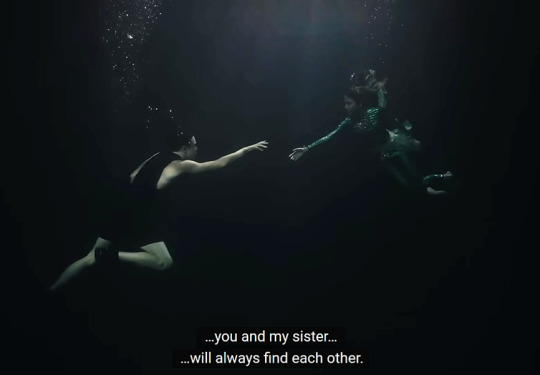
However, the special promo video (released 24 November 2023) also tells us (in Heng's interview linked here) that Chalothon and Wansarat were lovers in past lives, even while it is Phaya and Wansarat (reincarnated as Tharn) who are paired by fate in The Sign.
And as the nagas and garudas are bitter enemies, the love story between Phaya and Tharn/Wansarat that transcends time and reincarnation cycles is also one that must have been (and will continue to be) forbidden by their respective naga and garuda tribes (especially since Tharn/Wansarat also used to be naga Chalothon's lover), and will undoubtedly be a source of conflict in the series. This is way beyond the Montagues and Capulets! 😍
So with this as the base, I took a look at the characters' names, and those belonging to Phaya, Chalothon, Tharn and Wansarat especially also reflect their garuda/naga origins. 🤩
Phaya's name (พญา) means lord, king or leader. While it can be applied to the nagas (พญานาค/phaya naak refers to the King of the Nagas) it is also used for Garuda (the Thai national symbol) – พญาครุฑ/phaya khroot, or Lord Garuda (and is what his name references in The Sign).

(above) Billy Patchanon as Phaya
Chalothon's name (ชโลทร) is rare, but it is derived from Pali/Sanskrit and means river, sea or body of water, reflecting the watery homeland of his naga persona.

(above) Heng Asavarid as Chalothon
Tharn's name (ธาร) also has a connection to his water-dwelling naga roots. Tharn/ธาร is short for ลำธาร/lam thaan and means stream, brook or creek (and he is thus a naga nong to Chalothon's phi).

(above) Babe Tanatat as Tharn/Wansa
However, Tharn is his chue len. His formal name is Wansa, and is the same Wansa in Wansarat (which the narrative lets us know at Ep.1 [3/4] 9.35).
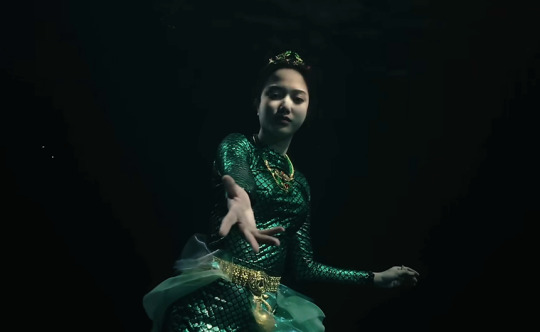
(above) Freen Sarocha as Wansarat
Now Wansarat is spelt วรรณษารัตน์ in the subtitles (at Ep.1 [3/4] 9.02), and I can't find any translation of it that makes sense in the context of The Sign's world-building.
But Wansarat's name is spelt differently elsewhere on the Internet (on Thai drama websites, and movie databases, etc. like thaimovie.org), and I assume they've all based it on official releases from Idol Factory because the spelling is consistent across these other sources – it's วรรษารัตน์ there.
And Wansa/Wansarat spelt this way also reflects the nagas' dominion over water, because วรรษา/wansa (an archaic word, referenced in an older dictionary but not newer ones) means rain or rainy season (from the Sanskrit varsha) – in Thailand the nagas are also associated with rain control, and prayers are offered to them for timely and abundant rainfall when it is needed. (The -rat part of Wansarat is a feminine ending meaning jewel or gemstone, and may echo with meaning for speakers of Indian and Sri Lankan languages, since it's derived from the Pali/Sanskrit ratna).
Just out of interest (because nobody asked 😂) some of these naga/garuda elements were also present in the early episodes of KinnPorsche – the den of the Theerapanyakuls (nagas, wealthy beings of the underworld) was full of watery elements (e.g., the waterfall, the various pools, and Tankhun's carp – which in Chinese belief are the original, natal form of dragons). The -nak in Kinn's formal first name Anakin (which is not a traditional Thai name) is also a nod at the word naga. Porsche had the tattoo of a fiery phoenix on his back, and was out of his element whenever water was concerned (e.g., his failed pool challenge, the mermaid costume punishment, his misadventure with the sprinkler when he tried to smoke in the store room – water vanquishing the flame). Kinn was unable to make fire when they were trapped in the forest, despite claiming to be friends with the flame, while Porsche could immediately do it.
But I didn't see the KinnPorsche narrative taking the naga/garuda themes much further than these random nods in the earlier episodes. Maybe it did (like Kinn and Porsche could be seen acclimatizing to each other's realms more), but I just couldn't be bothered to look at the show more closely since it didn't really stand up to deeper scrutiny, and after the first few episodes I just went along for the exhilaration of the ride instead. 👍
Anyway, I'm totally bedazzled by the level of world-building going on in The Sign and look forward to more from the series. If the first episode is anything to go by, I think Executive Producer Saint Suppapong may be on to something! 😍
#the sign#the sign the series#mythology#naga#garuda#naga and garuda#thai mythology#thai bl#phayatharn
589 notes
·
View notes
Text

Atul Jain Walk
Crested Serpent Eagle
Pachmarhi India
281 notes
·
View notes
Text

Crested Serpent Eagle
82 notes
·
View notes
Note
let me just start by appreciating the hard work you do for this IF. this is genuinely one of the few IFs that have given me brainrot (/pos), and im so excited to see how it goes! your writing is amazing and the characters are so entertaining! im not very good with compliments, but i just wanted to give some appreciation with your work <3
anyway, what are the family symbols/crests of the ROs (or anyone)? we know that the Pendragon's is dragons and red, Le Fay's is serpents and green, and Leudonus's is bears and moss green. and follow-up question, are there any symbolism to why you chose that particular symbol, or was it already predetermined in Arthurian legend?
Thank you so much! 💕
No, it's not predetermined from Arthurian legends, I honestly took a lot of liberty with the myths in general - Boc is inspired by them but very much its own thing haha.
Alright, so the crests!
Pendragon - gold dragon, red background. All the dragon bloods chose their crests based upon the dragons that gave them their powers. They all went with a gilded dragon in various poses, and the background came from the color of the scales. Fun fact, the posture of the dragon on the Pendragon crest was changed when they first came to sit on the throne - it was less threatening as it is now, rearing, claws ready to strike, maw open.
Le Fay is not actually green! It's serpent and azure blue, the color being reminiscent of the sea. In-story explanation: their fae ancestor first showed themselves to their human ancestor in the shape of a snake. As to why I chose it, I really like serpent imagery and symbolism and how it can be use in the game.
Leudonus have the moss green and bear because I wanted something you'd think of as big and strong and fearsome. The origin of it in game is not set yet.
Beauregard - swan and blue. Swan because the first of their family to sit on the throne is said to have arrived at the castle in a swan-drawn boat to dethrone the one who wanted the crown, seeing them as unfit to rule. This is loosely based on the tale of the Swan Knight/Knight of the Swan. Also swans because they're beautiful birds and they have plenty in Astolat.
Meier (Isac's family) have a stag and dark green as their symbol. They are descendants of the fae known as the Deer King, hence the stag, and their magic affinity is plant-based, hence green.
Hendrik (Guinevere's family) - Red tulip and black. Tulip because of the family business, back before they even got on the throne.
Allard family, after they stopped using the Le Fay serpent - the Royal Eagle, (what we know as golden eagle). It's supposed to be a symbol to evoke power, strength and determination.
Laurent family (the family of Elena aka Galahad's mother) - a bundle of lavender against bronze background.
Du Lac - apple tree with red fruit, light green background. Inspired by the association of Avalon with appletrees within Arthurian legends. Initially it was mentioned as a symbol of Avalon in the game but I later changed it. In my story, Avalon is based on Mediterranean islands so if there's any fruit emblematic to it, it should be something more citrusy.
These are the most defined at the moment.
100 notes
·
View notes
Text

[https://www.inaturalist.org/observations/17836191] Crested Serpent-Eagle || Spilornis cheela Observed in India
#ornithology#eagle#birds#birds of prey#nature#wildlife#photography#air beast#who cooks for queue? who cooks for queue all?
74 notes
·
View notes
Text

Crested Serpent Eagle
Instagram|inprnt|Cara|Behance
16 notes
·
View notes
Text

Crested Serpent Eagle
147 notes
·
View notes
Text



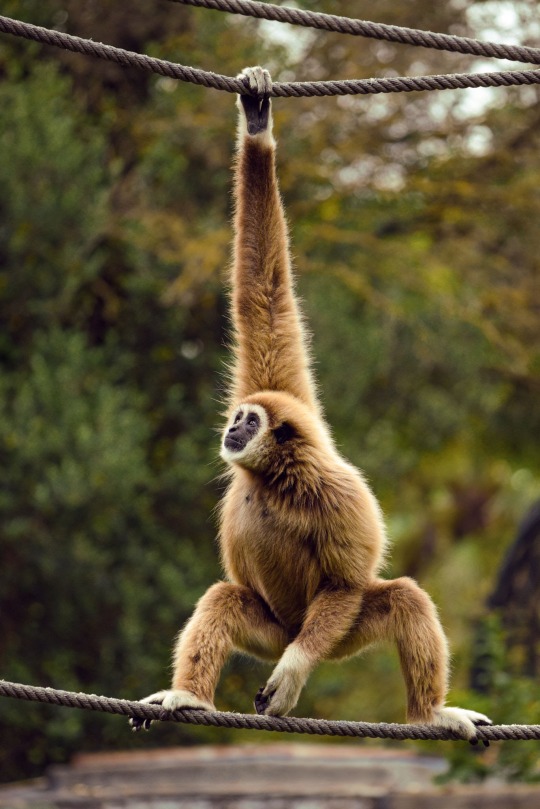

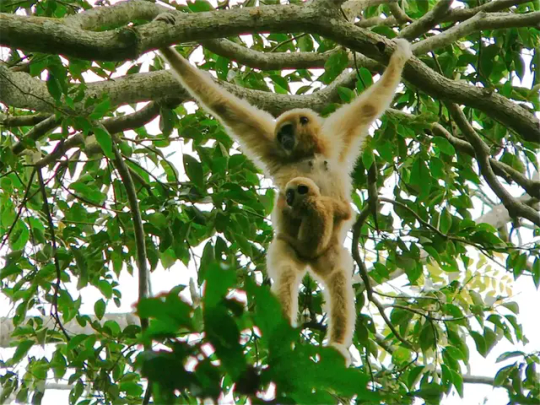

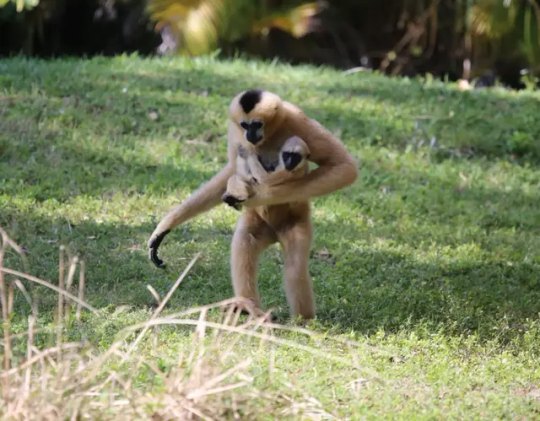

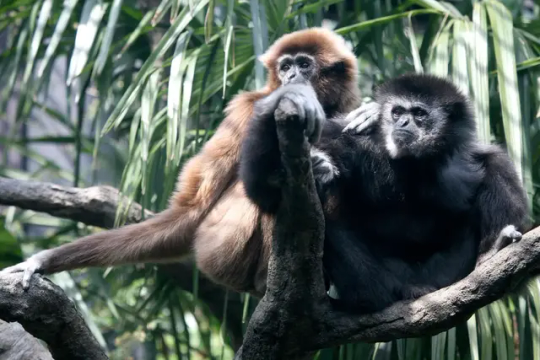

The lar gibbon also known as the white handed gibbon is an endangered primate in the gibbon family, Hylobatidae which is native throughout Indonesia, Laos, Malaysia, China, Myanmar, Burma, Thailand, and Northern Sumatra. They sport the largest contiguous range of any gibbon species and typically inhabit lowland and submontane rainforest, mixed deciduous bamboo forest, and seasonal evergreen forest.They are a diurnal, arboreal, and social species which lives in familial groups comprised of a mated pair or polyandrous group and there young offspring which often communicate via there loud & distinctive calls. The diet is comprised mostly of fruit, leaves, flowers, vines, insects, and eggs. Lar gibbons are themselves eaten by tigers, clouded leopards, marbled cats, crested serpent eagles, and reticulated pythons. Both sexes reach around 16 – 24in (41 -61cms) in head to body length and 8-17lbs (3.6 -7.7kg) in weight. As gibbons they are true brachiators, propelling themselves through the forest by swinging under the branches using their arms. Reflecting this mode of locomotion, the lar gibbon has curved fingers, elongated hands, extremely long arms and relatively short legs. The fur of this animal can vary from dark brown to ginger, tan, or cream in coloration. Its face is black, with a distinct white ring of hair around it. Its hands and feet are also white. Mating may occur year round but typically peaks during the dry season around March, after a 6-7 month pregnancy a mother lar gibbon will give birth to a single baby. For the first 4 to 6 months of its life, the infant is nursed and carried around by its mother. She then carries it around less and less, and it begins eating solid food, before becoming fully weaned by 2 years old. After weaning it is primarily cared for by its older siblings, and after 3 years it in turn starts caring for its younger siblings as well. Lar gibbons reach sexual maturity between 6 to 9 years of age at which point they leave there familial group in search of mates. Under ideal conditions a lar gibbon may live upwards of 25 years.
#animal#animals#lar gibbon#gibbon#ape#primate#pleistocene#pleistocene pride#white handed gibbon#white hand gibbon#asian#asia
88 notes
·
View notes
Text
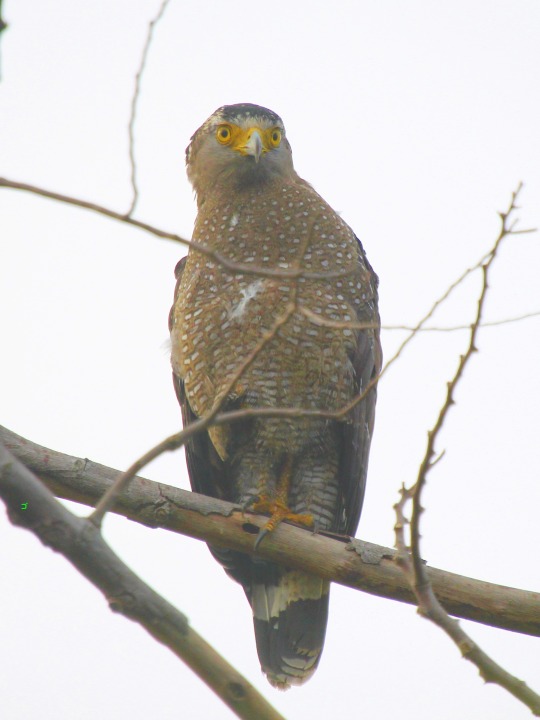

カンムリワシ
カッコいいなー。
R5.8
#西表島#カンムリワシ#特別天然記念物#鳥#鳥類#野鳥#バードウォッチング#生き物#自然#nature#photography#写真#animal#猛禽類#ワシ#eagle#🦅#crested serpent eagle
47 notes
·
View notes
Text
Tears of the Kingdom: The Final Analysis
Part 13: The Finale
Part 12 here
So, Sidon's tear.
I backed up a few frames to see if I could get a better look at the etchings on it while it was close up.

It looks...like an eye?
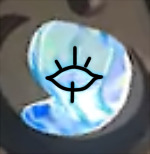
Almost like an Eye of Truth, but not quite. Given that Zelda's tear had Recall on it, I wonder if this tear gives a power unique to it, as well.

When we zoom out, we can see that Sidon, at this point in the game, is wearing a fitted version of his father's crown.

Which, of course, begs the question—what happened to Dorephan? When last we saw him, he was in good health and spirit, if mourning his daughter. Is he hurt? Did the Calamity injure him? Did Sidon prove himself mature? What is going on?
Tulin comes into view. He's only here very briefly, so it was hard to catch him properly, but-
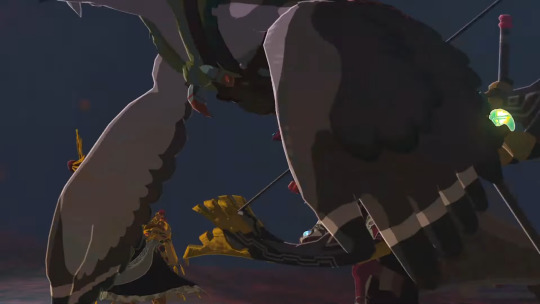
Right here, he's now holding the Great Eagle Bow instead of his old Swallow. Which, if you didn't know—in order to make the Great Eagle Bow in Breath of the Wild, after you've broken the original, you need to take Harth a Swallow Bow, five bundles of wood, and a diamond. Little buddy possibly crafted the upgrade himself.
Now let's look at his tear.
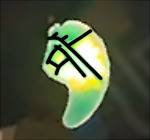
This one is much more abstract than Sidon's, so I haven't any guesses as to what it could mean.

Once Tulin flies by, Link races to fight an enemy, a HUGE shard on his back.

Despite its size, however, he wields it as a one-handed weapon, fused to the hilt of a Rusty Broadsword:
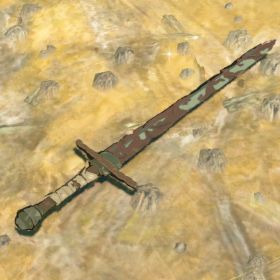
The material doesn't look like anything I've seen before, and given its glow and the fiery Gleeok he's about to face-
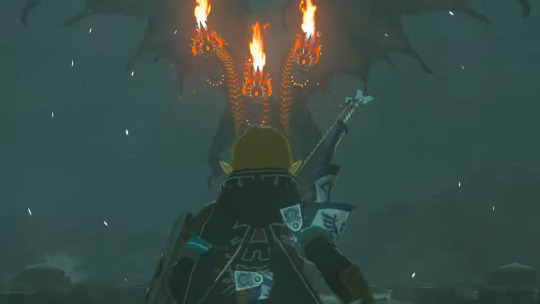
I'd say it's embued with the power of ice, if not outright made from the interior of one of Naydra's horns.

Speaking of Gleeok! For those unfamiliar, Gleeok is a classic Zelda boss. And by classic, I mean actually classic.

This guy, from the original Legend of Zelda, has made so many appearances.
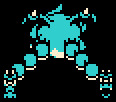
Oracle of Seasons had Gleeok like this.
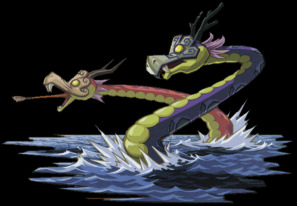
In Phantom Hourglass, it was a two headed water serpent.
This isn't even counting the variants and spinoffs, Gleerok from Minish Cap or Gleeokenspiel from Cadence of Hyrule. This guy is recurring, just like Dodongo is.
The number of heads Gleeok has varies—even in Legend of Zelda, the boss showed up twice, first with two heads and then with four. And in its official art from back then
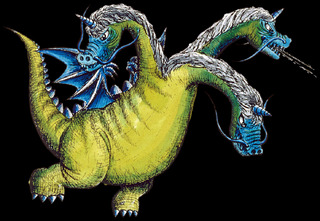
He has three.

This guy has three huge, unhinged jaws, fire blazing out of the crest of its heads, and its eyes are all malice slits.
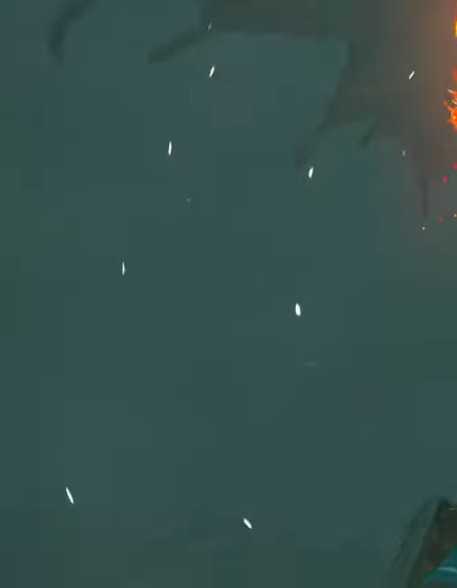
Despite the fire, though, the background is a dull teal, with snow falling. The only other place in the trailer we've seen this environment is in the Thunderhead that we've explored with Tulin.

We're reaching the end now. Zelda holds the Master Sword, says that Link is "our final hope."
"Our last line of defense will be Link."
After what? What is Link a contingency for? Plans falling through? Ganondorf breaking free?

Tears of the Kingdom. The filled in, red edge of the mural we saw in the last trailer.

Ganondorf commands his forces, a towering figure above the rest.
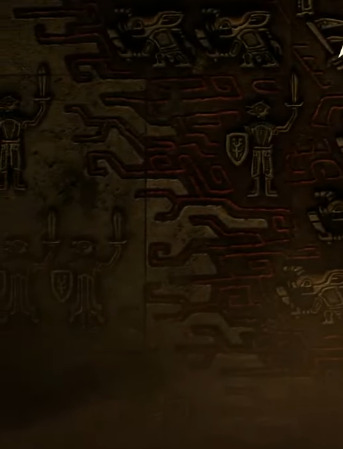
Soldiers stand bravely against him in battle.

There are enemies new long with the old.

And among the chaos, right at Ganon's feet, one person has managed to slip past the hordes, with no weapon or shield to protect them.
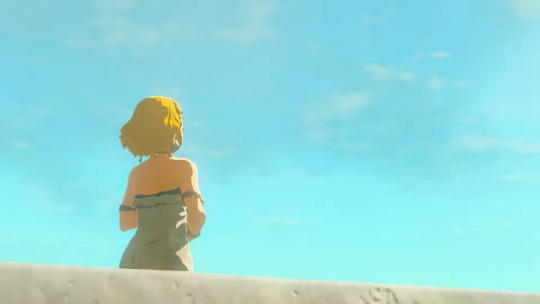
Zelda, scuffed from battle, calls our name-

The Master Sword clutched tightly in her hands, hilt barely visible.
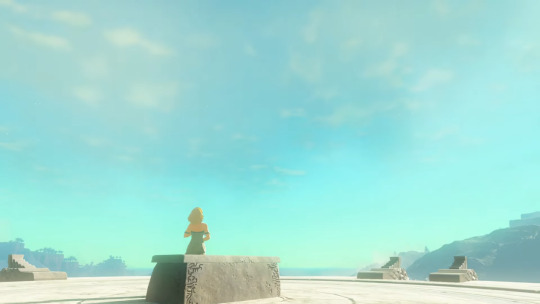
"You must find me," she says, seated on her altar

Her face toward the southern sea

From a place we've seen before.
I'd like to bring your attention to one last thing, before I end this analysis.

We've encountered five tears thus far in the trailer, each with different colors, each different significance.

We're still missing two.
117 notes
·
View notes